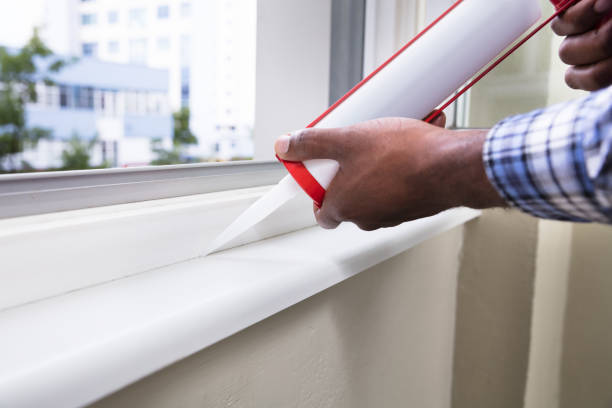
Railway stations are among the most heavily used public infrastructures in any nation. From millions of daily commuters to heavy freight operations, these spaces demand robust, safe, and cost-effective structural materials. Among the many components involved in the construction and maintenance of railway stations, Mild Steel Plates stand out as a critical material for platforms, frames, beams, and various structural applications.
In this blog, we explore the reasons why Mild Steel Plates are preferred in railway stations, their properties, applications, benefits, and how they contribute to building long-lasting and efficient station infrastructure.
What Are Mild Steel Plates?
Mild Steel Plates are flat-rolled steel products made from low-carbon steel, typically containing about 0.05% to 0.25% carbon. This low carbon content makes them more ductile and easier to work with compared to other high-carbon steel variants. They are known for their excellent weldability, moderate strength, and affordability, making them ideal for construction and structural use.
In railway station construction, Mild Steel Plates are often used for:
- Station platforms
- Framing structures
- Support beams
- Protective casing
- Canopy structures
- Walkways and ramps
Why Mild Steel Plates Are Ideal for Railway Stations
Railway stations face a unique set of environmental and structural demands. From enduring vibrations caused by passing trains to dealing with varying weather conditions and daily wear and tear from thousands of passengers, the materials used must be both reliable and economical. Mild Steel Plates offer several advantages that make them the preferred material in these settings.
1. Excellent Strength-to-Weight Ratio
Mild steel has a high tensile strength while remaining relatively lightweight. This makes Mild Steel Plates perfect for applications where both load-bearing capacity and ease of installation are essential. Platforms and station frameworks constructed with mild steel can handle large volumes of foot traffic and mechanical equipment.
2. Cost-Effective Solution
Affordability is a major consideration in public infrastructure projects. Mild Steel Plates are more economical than many other structural metals, especially when purchased in bulk. This cost efficiency makes them an excellent option for large-scale projects like railway stations.
3. Easy Fabrication and Installation
One of the biggest benefits of mild steel is its malleability. It is easy to cut, weld, bend, and shape, which allows contractors to tailor Mild Steel Plates to exact design specifications for platforms, frames, and enclosures. Their adaptability also speeds up project timelines.
4. Corrosion Protection with Coatings
Though mild steel is not inherently corrosion-resistant, it works well with protective coatings such as galvanization or epoxy paint. When treated properly, Mild Steel Plates can last decades, even in outdoor or semi-exposed environments like railway platforms and station facades.
5. Fire Resistance
Steel is naturally non-combustible. When railway stations are built using Mild Steel Plates—especially in critical framing or structural elements—the overall fire safety of the station is improved. This can be a crucial factor in complying with national safety codes.
Applications of Mild Steel Plates in Station Infrastructure
Railway stations are complex structures, requiring a variety of steel components. Here’s how Mild Steel Plates are commonly used:
1. Platform Construction
Station platforms must be extremely durable to withstand foot traffic, luggage carts, and vibrations from arriving and departing trains. Mild Steel Plates offer a strong base and are often used as part of the platform frame or deck. With anti-slip coatings or surface treatments, they also improve safety for passengers.
2. Structural Framing
Framing is the skeleton of any station building. From the main concourse to elevated pedestrian bridges and overpasses, Mild Steel Plates form the web of support beams, columns, and frames that hold up roofs and walls.
3. Walkways and Staircases
In busy railway stations, pedestrian walkways, stairs, and ramps must be sturdy and reliable. Mild Steel Plates provide a solid, cost-efficient foundation and can be designed to include anti-skid surfaces for passenger safety.
4. Protective Barriers and Cladding
Mild Steel Plates are used to create protective barriers along platform edges, fencing, and enclosures for electrical or communication equipment. They’re also used in decorative cladding that enhances the aesthetics of station buildings.
5. Signage and Utility Panels
Large information boards and utility control panels at stations often require a durable backing. Mild Steel Plates provide the strength and rigidity needed to support these elements in high-traffic areas.
Environmental and Maintenance Considerations
While Mild Steel Plates are cost-effective and durable, maintaining their longevity in a railway station environment requires regular inspection and treatment.
- Surface Treatment: Applying zinc coatings (galvanization) or paint systems protects steel from corrosion and extends its service life.
- Maintenance: Routine inspections help identify wear, rust, or fatigue in plates used in high-stress areas like platforms or staircases.
- Sustainability: Steel is 100% recyclable. Many railway projects now use recycled Mild Steel Plates, helping reduce environmental impact.
Mild Steel Plates vs. Other Structural Materials
Here’s how Mild Steel Plates compare to alternatives:
| Material | Cost Efficiency | Strength | Weldability | Corrosion Resistance |
| Mild Steel Plates | High | Moderate | Excellent | Requires Coating |
| Stainless Steel | Low | High | Good | Excellent |
| Aluminum | Moderate | Low | Moderate | Good |
| Concrete | High | High | N/A | High |
As shown above, Mild Steel Plates strike a solid balance between affordability and structural performance, especially when corrosion protection is added.
Future of Mild Steel Plates in Modern Stations
As urban transit systems expand and railway stations are modernized, the demand for Mild Steel Plates continues to grow. Their combination of performance, adaptability, and sustainability aligns well with the requirements of smart infrastructure projects.
Technological innovations like pre-engineered steel modules and CNC-cut Mild Steel Plates are also streamlining the construction of stations, enabling faster and more efficient builds.
Conclusion
Railway stations serve as critical infrastructure hubs that demand reliable, safe, and cost-efficient materials. Mild Steel Plates offer all of these attributes and more—making them the preferred choice for platforms, frames, walkways, and various other applications in station construction.
Their easy fabrication, strength, and long lifespan—especially when properly coated—mean that railway authorities and civil contractors can depend on Mild Steel Plates for durable performance under heavy daily use. As the demand for high-quality station infrastructure continues to rise, mild steel remains a dependable backbone of modern railway design.





